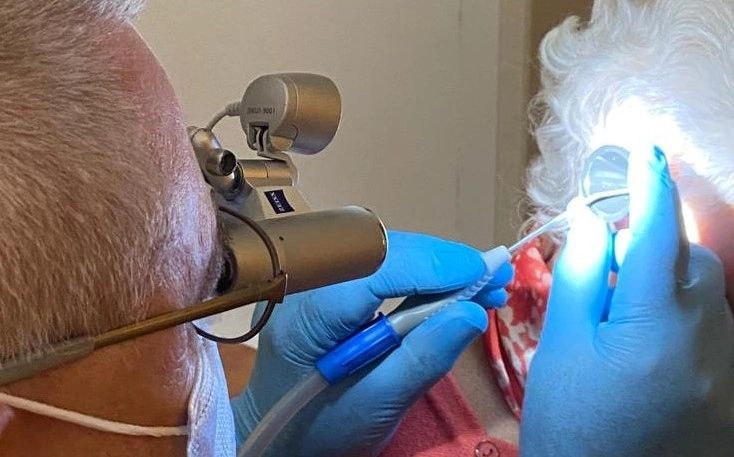What is ear wax?

Ear wax is not a sign of poor hygiene. It is a completely natural substance that is produced by all of us from glands in our ear canals. It helps to lubricate and protect the ear canal.
A small amount of wax is normal and maintains the health of the ear canal but in some cases, the ear wax can build up and form a blockage or plug.
Causes of impacted ear wax

Some people produce more wax than their ears can get rid of naturally. Causes of ear wax include:
- Wearing hearing aids, ear plugs or ear bud headphones.
- Having narrow or hairy ear canals.
- Age – very dry and hard wax is common as we age.
- Exposure to moisture. Wax can absorb water and expand.
Commonly it is when people try to clean their ears, using things like cotton buds, a finger, or other objects, that earwax can is actually pushed further into the ear – where it can build up and become impacted.
Symptoms of blocked ears

An ear blockage can be caused by a number of things. It can cause discomfort and make it difficult to hear. Any of the following symptoms of ear wax may be experienced:
- Earache
- Infection
- A feeling of fullness in the ear
- Muffled hearing
- Ringing or buzzing sounds in the ear (tinnitus)
- Itchiness in the ear
- Dizziness or vertigo
- A tickly cough
- If you wear hearing aids you may experience whistling (feedback) from your aids
Once the earwax is removed, these symptoms usually improve.

Ear wax removal
If a build-up of ear wax, debris or a foreign body is blocking your ear causing hearing loss, tinnitus, discomfort or dizziness we would normally recommend having it removed.

This website uses cookies.
We use cookies to analyze website traffic and optimize your experience. By accepting cookies, your data will be aggregated with all other user data. For more info, see our Privacy Policy